-
-
-
- Challenges and Chances: A Review of the 1st Stem Cell Community Day
- Summertime, and the Livin’ Is Easy…
- Follow-on-Biologics – More than Simple Generics
- Bacteria Versus Body Cells: A 1:1 Tie
- Behind the Crime Scene: How Biological Traces Can Help to Convict Offenders
- Every 3 Seconds Someone in the World Is Affected by Alzheimer's
- HIV – It’s Still Not Under Control…
- How Many Will Be Convicted This Time?
- Malaria – the Battle is Not Lost
- Physicians on Standby: The Annual Flu Season Can Be Serious
- At the Forefront in Fighting Cancer
- Molecular Motors: Think Small and yet Smaller Again…
- Liquid Biopsy: Novel Methods May Ease Cancer Detection and Therapy
- They Are Invisible, Sneaky and Disgusting – But Today It’s Their Special Day!
- How Many Cells Are in Your Body? Probably More Than You Think!
- What You Need to Know about Antibiotic Resistance – Findings, Facts and Good Intentions
- Why Do Old Men Have Big Ears?
- The Condemned Live Longer: A Potential Paradigm Shift in Genetics
- From Research to Commerce
- Chronobiology – How the Cold Seasons Influence Our Biorhythms
- Taskforce Microbots: Targeted Treatment from Inside the Body
- Eyes on Cancer Therapy
-
-
-
-
-
- Challenges and Chances: A Review of the 1st Stem Cell Community Day
- Summertime, and the Livin’ Is Easy…
- Follow-on-Biologics – More than Simple Generics
- Bacteria Versus Body Cells: A 1:1 Tie
- Behind the Crime Scene: How Biological Traces Can Help to Convict Offenders
- Every 3 Seconds Someone in the World Is Affected by Alzheimer's
- HIV – It’s Still Not Under Control…
- How Many Will Be Convicted This Time?
- Malaria – the Battle is Not Lost
- Physicians on Standby: The Annual Flu Season Can Be Serious
- At the Forefront in Fighting Cancer
- Molecular Motors: Think Small and yet Smaller Again…
- Liquid Biopsy: Novel Methods May Ease Cancer Detection and Therapy
- They Are Invisible, Sneaky and Disgusting – But Today It’s Their Special Day!
- How Many Cells Are in Your Body? Probably More Than You Think!
- What You Need to Know about Antibiotic Resistance – Findings, Facts and Good Intentions
- Why Do Old Men Have Big Ears?
- The Condemned Live Longer: A Potential Paradigm Shift in Genetics
- From Research to Commerce
- Chronobiology – How the Cold Seasons Influence Our Biorhythms
- Taskforce Microbots: Targeted Treatment from Inside the Body
- Eyes on Cancer Therapy
-
-

遠心機プレート
製品
遠心機プレートについて
11 製品群
Browse our large range of centrifuge plates, including centrifuge microplates, 96-well centrifuge plates, PCR plates, and deep well plates. Find reasons why you should choose Eppendorf centrifuge plates, and use our considerations to help you select the best plate type for your applications.
もっと読む
表示を減らす
Why Choose Eppendorf Centrifuge Plates?
Find the Right Centrifuge Plates For Your Lab
Centrifuge Plate Prices
Resources
Why Choose Eppendorf Centrifuge Plates?
Quality and stability
Quality is a given with each and every Eppendorf centrifuge plate, ensuring robust, consistent, and efficient assays. Our centrifuge plates are made of high-quality polymers that offer high resistance to chemicals, temperature, and mechanical stress. Our plate range is also designed with centrifugation stability in mind, with our centrifuge microplates and DeepWell plates stable at speeds up to 6,000 x g.
もっと読む
表示を減らす
Simple, yet smart features to suit your application
Eppendorf centrifuge plates have several simple, yet smart features to enhance your lab workflows. All our plates have OptiTrack® matrix labeling that reduces pipetting errors and accelerates sample identification by up to 30%.
Our centrifuge microplates and DeepWell plates also have RecoverMax® well design, with the geometry of the wells maximizing sample mixing and recovery, while minimizing the risk of cross-contamination.
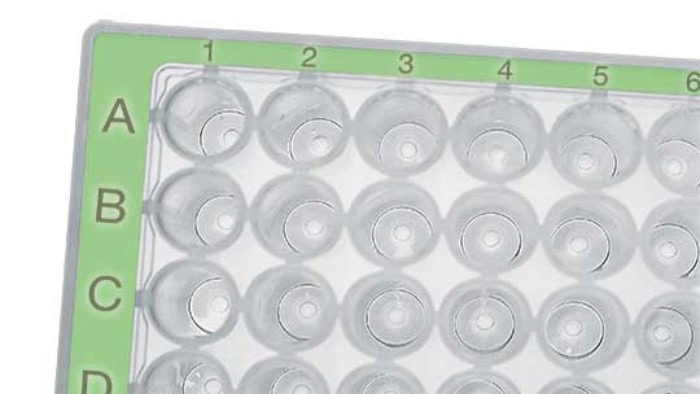
- SafeCode plates - customized barcodes for elevated traceability
- Eppendorf LoBind® plates – LoBind technology reduces sample binding to the surface, maximizing the recovery of DNA or proteins .
- Eppendorf Assay and Reader Microplates – Completely black or white wells for enhanced signal detection, and minimized autofluorescence and autoluminescence.
- Eppendorf twin.tec® real-time PCR Plates – PCR plates with white wells, designed to increase fluorescence signals in real-time PCR (qPCR) and other fluorescence assays.
- Eppendorf twin.tec® Trace PCR Plates BioBased - PCR plates made of a bio-based polymer, helping you reduce your lab’s carbon footprint.
もっと読む
表示を減らす
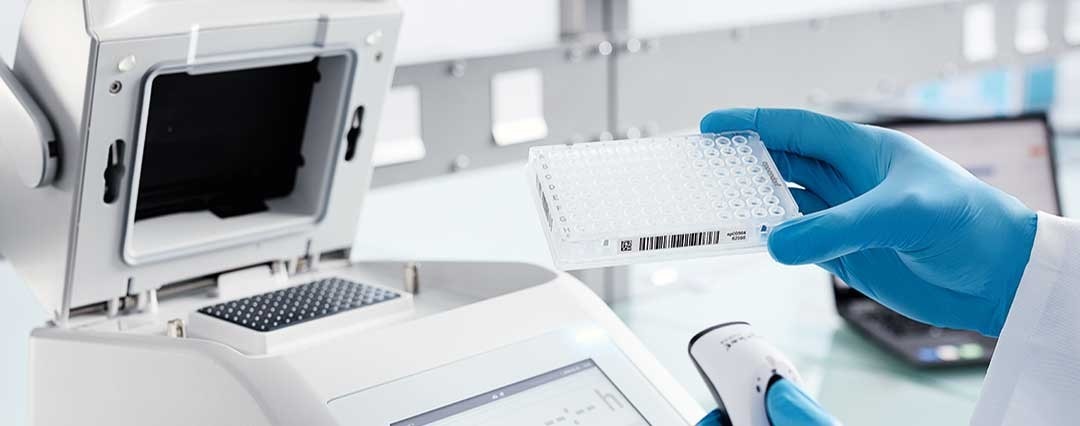
Learn more in our video: How it works - Eppendorf LoBind®
もっと読む
表示を減らす
Videos not loading, because cookies have been rejected. Change your

Find the Right Centrifuge Plates For Your Lab
When selecting centrifuge plates for your experiments, your main initial consideration should be plate type. At Eppendorf, we offer three main types of centrifuge plates: Eppendorf twin.tec® PCR plates , Deepwell plates , and Microplates .
Eppendorf Microplates are a versatile option for a wide range of assays, including those requiring high chemical or temperature resistance. Eppendorf Deepwell plates offer the same high quality, versatility, and performance as our Microplates, but with deeper wells to support larger sample volumes. And finally – as suggested by their name, twin.tec PCR plates are an ideal choice for PCR assays and other molecular biology applications such as NGS, with extremely thin-walled polypropylene wells for optimal heat transfer to the sample, and robust polycarbonate frames for high rigidity.
Once you’ve selected the appropriate centrifuge plate type for your lab needs, there are many other factors to consider, including well shape, plate color, and sample volume. Below, find further information to help you choose which Eppendorf centrifuge plate variant is right for you.
You can learn more about our various centrifuge plates and their features in our brochure.
Flat-, U-, or V-Bottom-Shaped Wells?
もっと読む
表示を減らす
- Flat-bottom wells - Usually preferred for fluorescence and luminescence-based assays, ensuring even light transmission. They are also ideal when using plate readers that analyze samples from below, and when culturing adherent cells.
- V-bottom (conical) wells - Their V-shape maximizes sample recovery during centrifugation, which is particularly beneficial when working with costly or limited samples.
- U-bottom (rounded) wells –Their U shape makes these plates well-suited for a range of centrifugation tasks including sample mixing, washing, and pelleting.
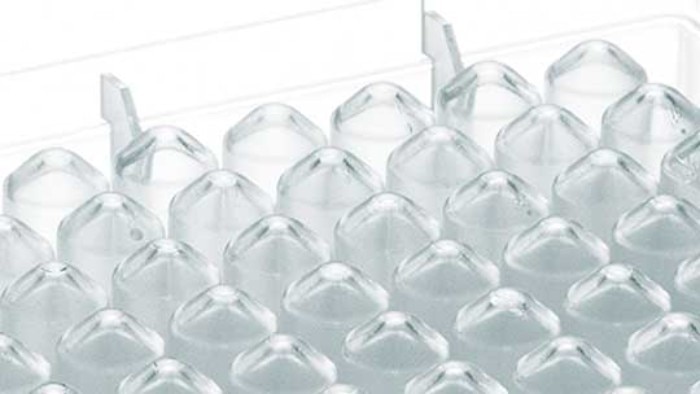
Which Well Color is Best For My Assays?
- Transparent centrifuge plates - Transparent wells offer enhanced sample visibility, which is particularly beneficial for teaching automation devices. Transparent wells are usually the default choice, if you are not using your plates for luminescence or fluorescence assays.
- Black centrifuge plates - Offer an excellent signal-to-noise ratio, even with low-concentration samples.
- White centrifuge plates - Maximize reflection for exceptionally sensitive luminescence detection.
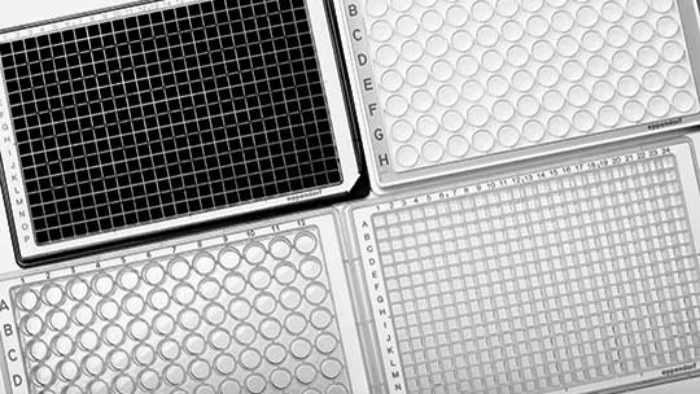
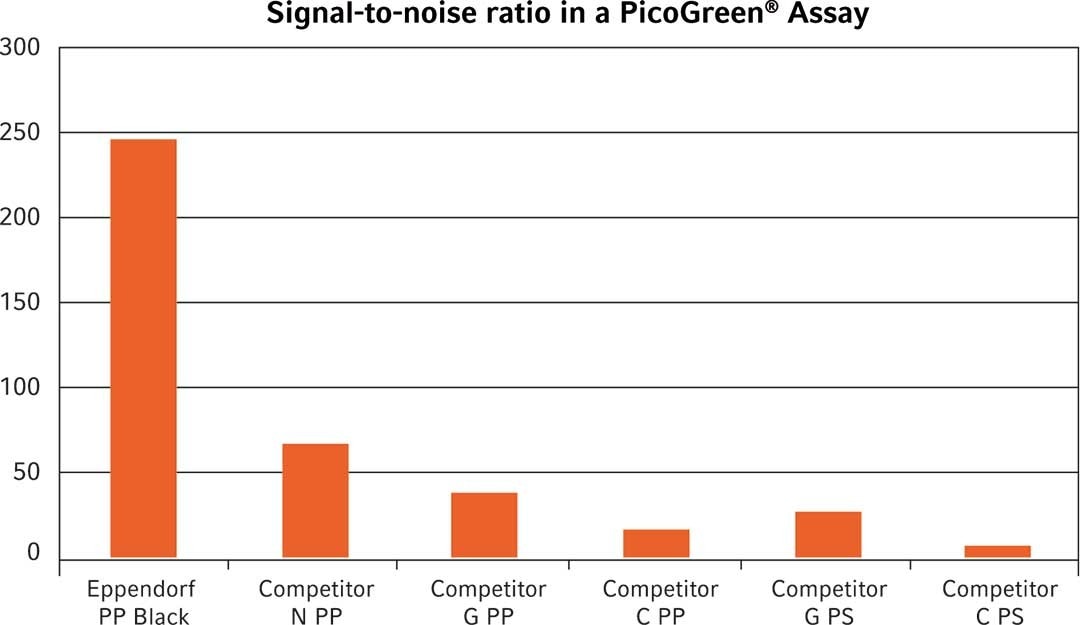
Need more help deciding on the right well shape and color?
What Sample Volumes and Numbers Are You Working With?
Our centrifuge microplates, DeepWell plates, and PCR plates are typically available in 96- or 384-well formats. 96-well centrifuge plates are suited for applications requiring lower sample numbers or larger well volumes, whereas 384-well plates are a great choice for higher throughput screening. Click here for more details on plate formats and working volumes.
もっと読む
表示を減らす
Centrifuge Plate Prices
もっと読む
表示を減らす
Videos not loading, because cookies have been rejected. Change your












